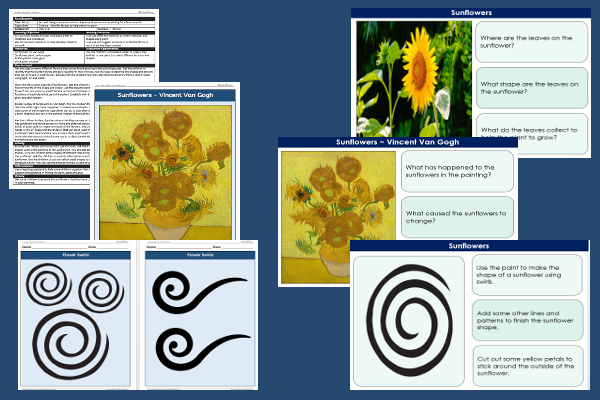Lesson Four – Sunflowers

This art and design teaching pack for Key Stage One gets the children to explore and record some of the different colours, shapes and patterns that have been used in a painting of some sunflowers by a famous artist.
The class can practise painting a range of sunflower shapes and patterns using swirls of paint colours to represent the artwork style and techniques of Van Gogh.
Download this teaching pack including a lesson plan, classroom activities and an interactive presentation to explore and record some of the different colours, shapes and patterns that have been used in a painting of some sunflowers by a famous artist
Activities in this teaching pack include a display poster to explore some of the colours, shapes and patterns that have been used in a painting by a famous artist and a template to record the different shapes and patterns that can be used when painting a flower based on the painting techniques of Van Gogh.
The interactive presentation can be used to explore and record some of the different colours, shapes and patterns that have been used in a painting of some flowers by a famous artist.
This lesson is part of an art and design scheme of work to get the children to develop and refine skills in representing different types of flowers grown in a garden by using a range of painting techniques. There are teaching activities for shared learning, differentiated worksheets to support independent learning and interactive presentations to introduce concepts and key skills.
-

English Spelling Assessment
Assess abilities in spelling different vocabulary words based on the National Curriculum programmes of study for Key Stage One
-

Maths Measurement Assessment
Assess abilities in estimating, measuring and comparing a range of different measurements for length, mass and capacity
-

Family Life
Investigate and reflect on some of the special events and experiences that might happen in the life of a family
-

Final Sounds Word Guess
Practise playing some guessing and matching games to identify the spelling and meaning of words with different final sounds
